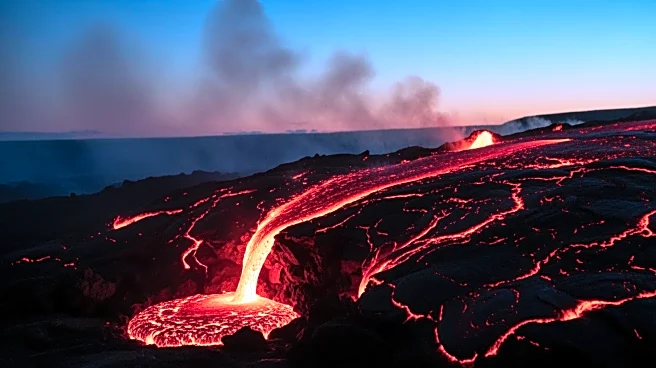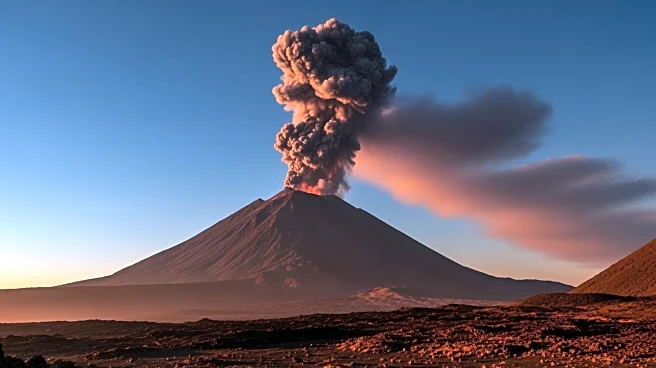What's Happening?
A long-dormant volcano in Ethiopia's Afar region erupted for the first time in nearly 12,000 years, sending ash plumes across the Red Sea toward Yemen and Oman. The eruption of the Hayli Gubbi volcano lasted
several hours and resulted in ash clouds drifting over Yemen, Oman, India, and Pakistan. The Toulouse Volcanic Ash Advisory Center observed the eruption on satellite imagery, noting the ash plume reached an estimated height of 14 kilometers. While no human casualties were reported, the eruption left the neighboring village of Afdera covered in ash, affecting livestock and local economies. The Afar region, known for frequent seismic activity due to its location at a junction of tectonic plates, has raised concerns about long-term effects on herders, tourism, and regional stability.
Why It's Important?
The eruption of the Hayli Gubbi volcano is significant due to its potential impact on the local economy and regional stability. The ash coverage has disrupted the livelihoods of livestock herders, as their animals have little to eat. Additionally, the eruption has stranded tourists and guides in the village of Afdera, affecting tourism in the Danakil Desert, a major tourist destination. The event highlights the challenges of monitoring volcanic activity in remote areas and underscores the need for improved disaster preparedness and response strategies. The ash plume's drift over multiple countries also poses potential air travel disruptions and health risks, emphasizing the importance of international cooperation in addressing natural disasters.
What's Next?
Local authorities are likely to focus on assessing the economic impact on herders and the tourism industry, while international agencies may monitor the ash plume's effects on air travel and health. Efforts to improve volcanic monitoring and disaster preparedness in the region could be prioritized to mitigate future risks. The eruption may prompt discussions on regional cooperation to address natural disasters and their cross-border implications.













